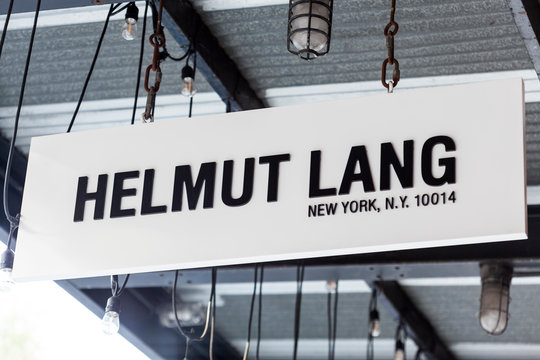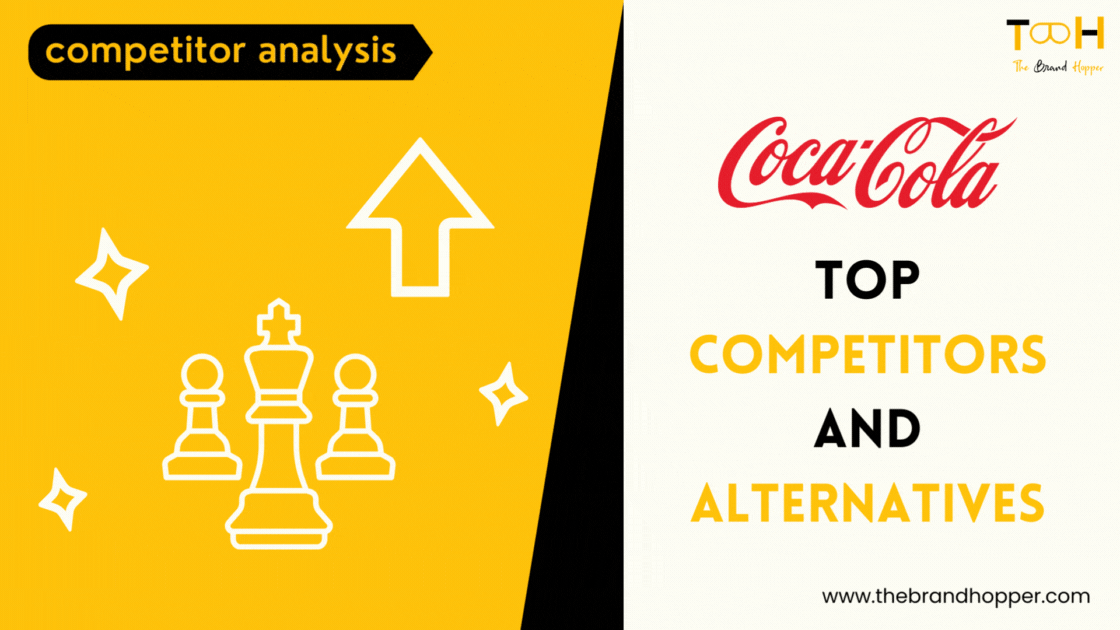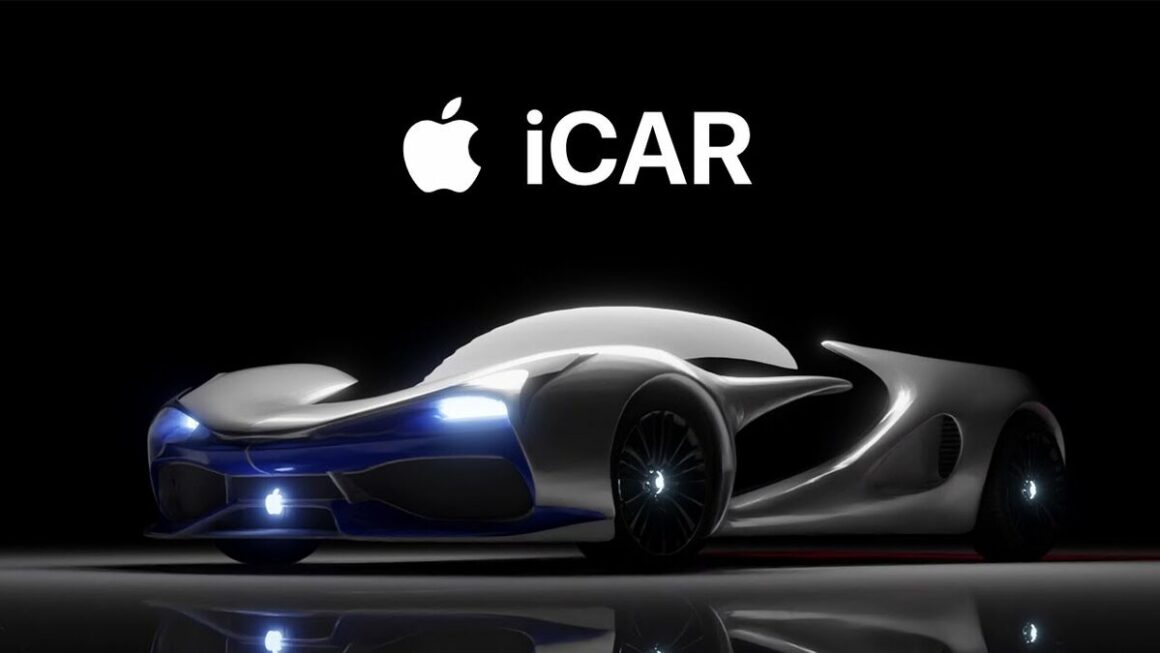Helmut Lang is a fashion brand founded by Austrian fashion designer Helmut Lang in 1986. The brand is known for its minimalist, deconstructivist, and often severe designs. The brand’s collections include ready-to-wear, accessories, footwear, and fragrances. In this article, we’ll delve deeper into the Marketing Strategies and Marketing Mix of Helmut Lang.
Lang was born in Vienna, Austria, in 1956. He studied fashion design at the Vienna University of Applied Arts, and then worked as a designer for several fashion houses in Milan before launching his own brand in 1986.
Lang’s designs were influenced by his interest in minimalism, deconstruction, and technology. He often used simple, geometric shapes and clean lines in his designs. He also experimented with new fabrics and technologies, such as neoprene and Lycra.

The minimalist aesthetic of Helmut Lang’s collections became its hallmark, characterized by monochromatic color palettes, sleek silhouettes, and a focus on architectural details. This stripped-down elegance set the brand apart, influencing the fashion landscape and inspiring many contemporary designers.
Lang’s designs were often controversial, but they also attracted a cult following. He was praised for his innovative designs and his ability to create clothes that were both stylish and functional.
Lang retired from fashion design in 2005, but his brand continues to be popular. In 2006, the brand was acquired by Link Theory Holdings (LTH), and then by Fast Retailing in 2009.
The brand has been relaunched under Fast Retailing, and it has been successful in attracting a new generation of customers. The brand’s designs are now more accessible and wearable, while still retaining Lang’s signature minimalist aesthetic.
Helmut Lang is a brand that is constantly evolving. It is a brand that is not afraid to experiment and to push the boundaries of fashion. The brand is a testament to Lang’s creativity and vision, and it is sure to continue to be a popular choice for fashion-forward individuals for years to come.
Here are some of the key features of Helmut Lang brand:
- Minimalism: The brand is known for its minimalist designs. Lang’s designs were often simple and understated. He used clean lines and geometric shapes in his designs.
- Deconstruction: The brand is also influenced by the deconstructivist movement in art and architecture. Lang’s designs often featured unfinished seams and raw edges.
- Technology: The brand experiments with new fabrics and technologies in its designs. Lang was one of the first designers to use neoprene and Lycra in his clothing.
- Functionality: The brand’s designs are both stylish and functional. Lang believed that clothes should be comfortable and easy to wear.
Today, the Helmut Lang brand, though no longer under the direction of its eponymous founder, remains committed to its heritage of pushing boundaries and challenging conventions. Collaborations with contemporary artists and designers keep the brand at the forefront of cutting-edge fashion, while paying homage to its iconic past.
Marketing Strategies of Helmut Lang
Helmut Lang employs a range of marketing strategies to maintain its distinct identity, engage its target audience, and stay relevant in the dynamic fashion industry. Here are the key marketing strategies of Helmut Lang in detail:
Artistic Collaborations and Partnerships:
Helmut Lang is known for its innovative approach to fashion, and artistic collaborations play a significant role in reinforcing this image. The brand partners with contemporary artists, designers, and creative visionaries from various disciplines, including fine arts, photography, and multimedia. These collaborations result in limited-edition capsule collections that showcase the fusion of art and fashion. By incorporating unique artistic elements into its designs, Helmut Lang attracts a niche audience interested in exploring unconventional and boundary-pushing fashion.

Influencer Marketing:
Another strategy employed by Helmut Lang involves creating partnerships with high profile individuals from different backgrounds – artists, musicians, actors, athletes, editors, writers, stylists, models etc. These collaborations involve gifting clothes for red carpet events, offering exclusives at private previews/trunk shows before collections hit stores; limited edition capsule ranges sold at specialty retail shops & department stores; custom pieces designed just for these cultural figures – all of which can result in organic mentions in editorial content/social posts reaching potentially millions of consumers around the world who otherwise may not have known of the brand previously.
Celebrity endorsements provide direct access to diverse millennial demographic groups and establish credibility within youth markets by appealing to their sense of taste and style. Some notable names include Kanye West, Rihanna, Drake, A$AP Rocky, Zoe Kravitz etc.
Digital Marketing and E-commerce:
Helmut Lang has a strong presence on social media platforms such as Instagram, Facebook, Twitter, TikTok, Pinterest, LinkedIn, etc., where they promote their brand through influencer collaborations, campaign visuals, product promotions, fashion shows, runway looks, behind the scenes content, etc. They use relevant hashtags like #HelmutLangRunway, #FashionWeek to engage followers and make use of paid adverts to reach a larger audience. By partnering up with digital natives that share similar values and sensibilities as them, they aim to tap into their audiences across multiple channels, gain access to highly engaged communities and increase visibility through authentic storytelling.
Helmut Lang’s website serves as an immersive e-commerce platform, offering customers a user-friendly experience and a comprehensive selection of products. The brand leverages data analytics to understand customer preferences, optimize its online offerings, and tailor marketing campaigns for maximum impact.
Minimalist Aesthetic in Marketing:
Helmut Lang’s minimalist and sleek aesthetic is consistently reflected in its marketing efforts. The brand’s advertising campaigns, lookbooks, and website design exhibit a clean and modern visual language. This commitment to a cohesive brand image strengthens recognition and builds brand equity, allowing consumers to associate the distinctive aesthetic with Helmut Lang instantly.
Runway Shows and Presentations:
Helmut Lang continues to present its collections during major fashion weeks and organizes exclusive presentations for industry insiders and the media. The brand utilizes these events not only to showcase its latest designs but also to create immersive experiences that embody its avant-garde spirit. Runway shows are often infused with artistic elements and unconventional presentations, amplifying the brand’s unique approach to fashion.
Cultivating Fashion Communities:
Helmut Lang understands the significance of cultivating strong connections with its loyal customers. The brand hosts exclusive events, pop-up shops, and art exhibitions that encourage face-to-face interactions with designers and other like-minded consumers. These community-building efforts foster a sense of belonging and loyalty, turning customers into brand advocates.
Sustainability and Ethical Practices:
Helmut Lang acknowledges the growing importance of sustainability in the fashion industry. The brand communicates its commitment to ethical practices, which include using eco-friendly materials, implementing responsible sourcing, and promoting transparent production processes. By aligning with contemporary consumer values, Helmut Lang appeals to conscious shoppers who prioritize sustainability in their purchasing decisions.
High-Profile Press Coverage:
Helmut Lang’s marketing strategy includes strategic media relations to secure high-profile press coverage. The brand maintains strong relationships with fashion journalists, editors, and media outlets, ensuring that its collections are featured in influential publications and digital platforms. Positive reviews and editorial features contribute to the brand’s reputation as a leading avant-garde label and drive interest in its latest offerings.
Niche Targeting and Brand Authenticity:
Helmut Lang’s marketing approach revolves around niche targeting. The brand caters to a specific audience interested in avant-garde, minimalist fashion that challenges traditional norms. Helmut Lang stays authentic to its heritage, which resonates with consumers seeking unique and daring fashion choices that stand out from mainstream trends. By maintaining this focused identity, the brand fosters a strong connection with its core audience, resulting in brand loyalty and advocacy.
Helmut Lang’s marketing strategies encompass a diverse range of tactics aimed at maintaining its avant-garde identity, engaging with influencers and customers, and promoting sustainability. Through artistic collaborations, digital innovation, and strategic partnerships, the brand continues to cement its position as a trailblazer in the contemporary fashion landscape.
Marketing Mix of Helmut Lang
The marketing mix, also known as the 4Ps (Product, Price, Place, Promotion), is a fundamental framework that outlines the essential elements of a brand’s marketing strategy. For Helmut Lang, each component of the marketing mix plays a critical role in communicating its unique identity and engaging its fashion-forward audience. Let’s explore the marketing mix of Helmut Lang in detail:
Product:
At the core of Helmut Lang’s marketing mix is its distinct and innovative product offerings. The brand’s designs are characterized by their avant-garde and minimalist aesthetics, featuring clean lines, sleek silhouettes, and unconventional materials. Helmut Lang’s product range includes:
- Apparel: Helmut Lang offers a diverse range of clothing, including ready-to-wear collections, unisex and androgynous designs, tailored pieces, outerwear, and avant-garde dresses. The brand’s designs challenge traditional norms, appealing to fashion enthusiasts who seek unique and daring style statements.
- Accessories: Complementing the clothing collections, Helmut Lang features a line of sophisticated accessories, such as handbags, belts, scarves, and footwear. These accessories reflect the brand’s minimalistic and contemporary approach, adding a touch of artistry to any ensemble.
- Fragrances: Helmut Lang has expanded its product portfolio to include a line of distinctive fragrances that embody the brand’s spirit of innovation and modernity. These scents reflect the minimalist aesthetics and avant-garde sensibilities of the brand.
Price:
As a high-end luxury fashion brand, Helmut Lang positions itself at the upper end of the price spectrum. The pricing strategy is based on the brand’s unique design ethos, premium materials, and the exclusivity associated with avant-garde fashion. The target audience for Helmut Lang includes fashion-forward individuals with an appreciation for unconventional designs and a willingness to invest in distinctive and artistic fashion pieces.
Place:
Helmut Lang carefully selects its distribution channels to ensure its avant-garde designs reach its target audience. The brand employs a combination of physical retail locations, online presence, and exclusive partnerships:
- Flagship Stores: Helmut Lang maintains flagship stores in select fashion capitals and high-end shopping districts. These physical locations serve as luxurious showcases for the brand’s collections, offering an immersive and sophisticated shopping experience that aligns with the brand’s identity.
- Online Store: The brand’s official website operates as an e-commerce platform, providing customers with a seamless shopping experience and access to the latest collections from anywhere in the world. Helmut Lang’s website also serves as an essential platform for engaging with its digital-savvy audience.
- High-End Retail Partners: Helmut Lang collaborates with prestigious department stores and luxury retailers, strategically positioning its products alongside other renowned fashion brands. These partnerships enhance the brand’s visibility and accessibility to a broader customer base.
Promotion:
Helmut Lang’s promotion strategy revolves around maintaining its avant-garde image, connecting with its target audience, and creating a buzz around its collections. Key components of the brand’s promotion strategy include:
- Artistic Collaborations: Helmut Lang collaborates with contemporary artists, designers, and creative visionaries to infuse its collections with fresh perspectives and artistic elements. These collaborations generate excitement and exclusivity around the brand, appealing to art enthusiasts and fashion-forward consumers alike.
- Runway Shows and Presentations: The brand hosts runway shows and immersive presentations during major fashion weeks, capturing the attention of industry insiders, media, and potential buyers. These events serve as powerful platforms to showcase the brand’s avant-garde designs and reinforce its reputation as a trailblazer in the fashion industry.
- Influencer Marketing: Helmut Lang actively engages with fashion influencers, celebrities, and key opinion leaders who align with the brand’s artistic identity. Influencers are invited to preview collections, attend runway shows, and collaborate on content featuring Helmut Lang products. Leveraging the reach and authenticity of influencers helps the brand expand its audience and connect with younger, trend-conscious consumers.
- Digital Marketing and Social Media: The brand places significant emphasis on its digital marketing efforts. Social media platforms, such as Instagram and Twitter, serve as essential tools for sharing captivating visuals, behind-the-scenes content, and fashion inspiration. Helmut Lang’s digital marketing strategy allows it to connect with a global audience and adapt to the fast-paced nature of the fashion industry.
- High-Profile Press Coverage: Helmut Lang maintains strong relationships with fashion journalists, editors, and media outlets to secure high-profile press coverage. Positive reviews and editorial features in influential publications contribute to the brand’s reputation as a leader in avant-garde fashion and generate interest in its latest offerings.
Helmut Lang’s marketing mix is a carefully curated blend of avant-garde design, artistic collaborations, and digital innovation. By offering unique and innovative products, employing strategic pricing, selecting distinctive distribution channels, and promoting its brand identity through artistic collaborations and high-profile events, Helmut Lang continues to shape the fashion landscape with its boundary-pushing and minimalist approach. Through these marketing strategies, Helmut Lang establishes itself as a vanguard in the contemporary fashion world, appealing to a niche audience seeking artistic and unconventional fashion statements.
Also Read: Marketing Strategies and Marketing Mix of Escada
To read more content like this, subscribe to our newsletter



